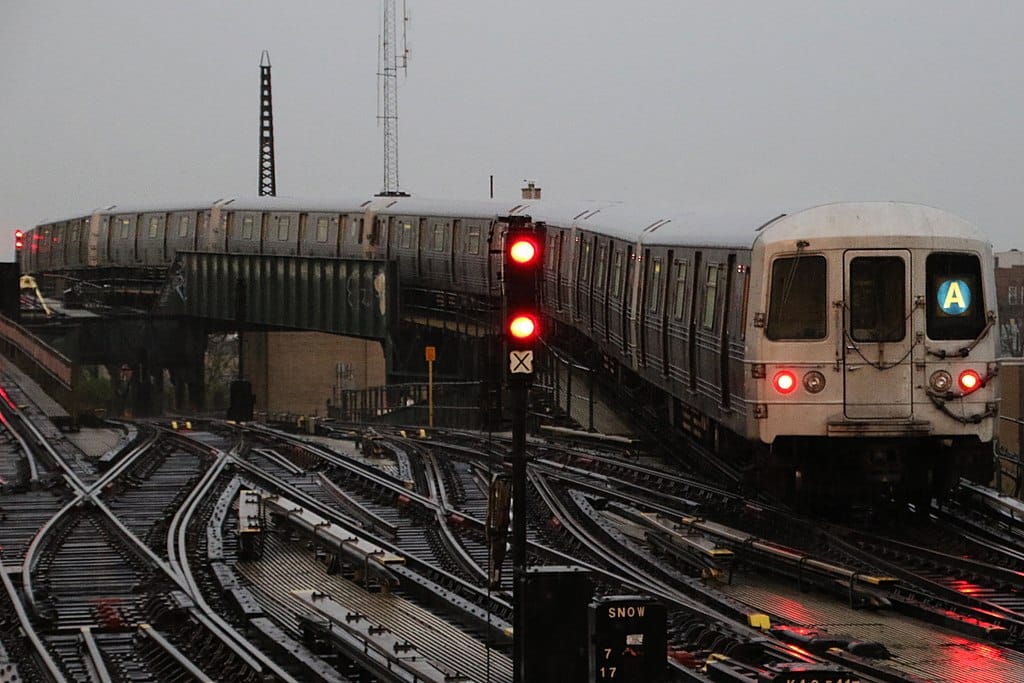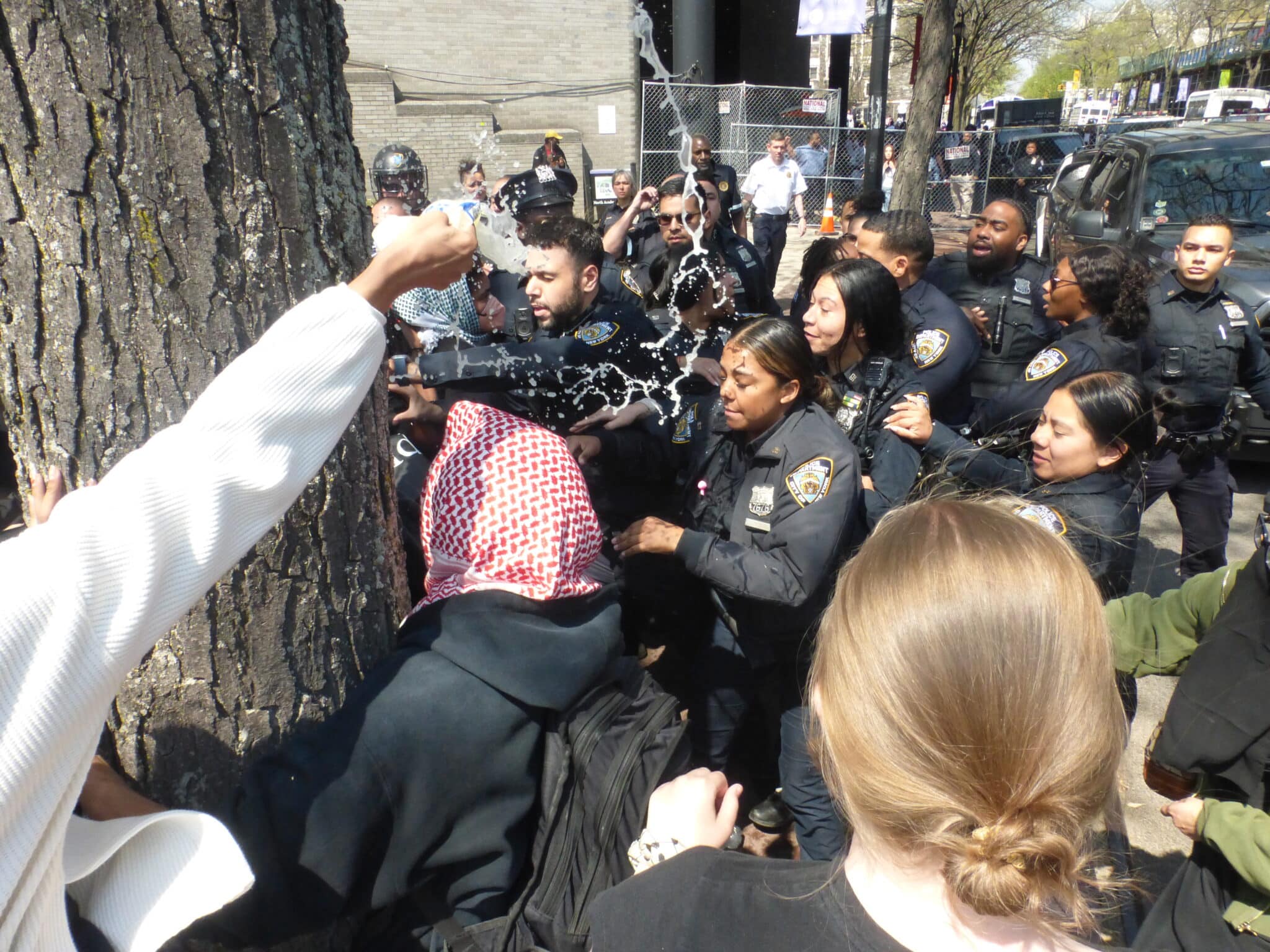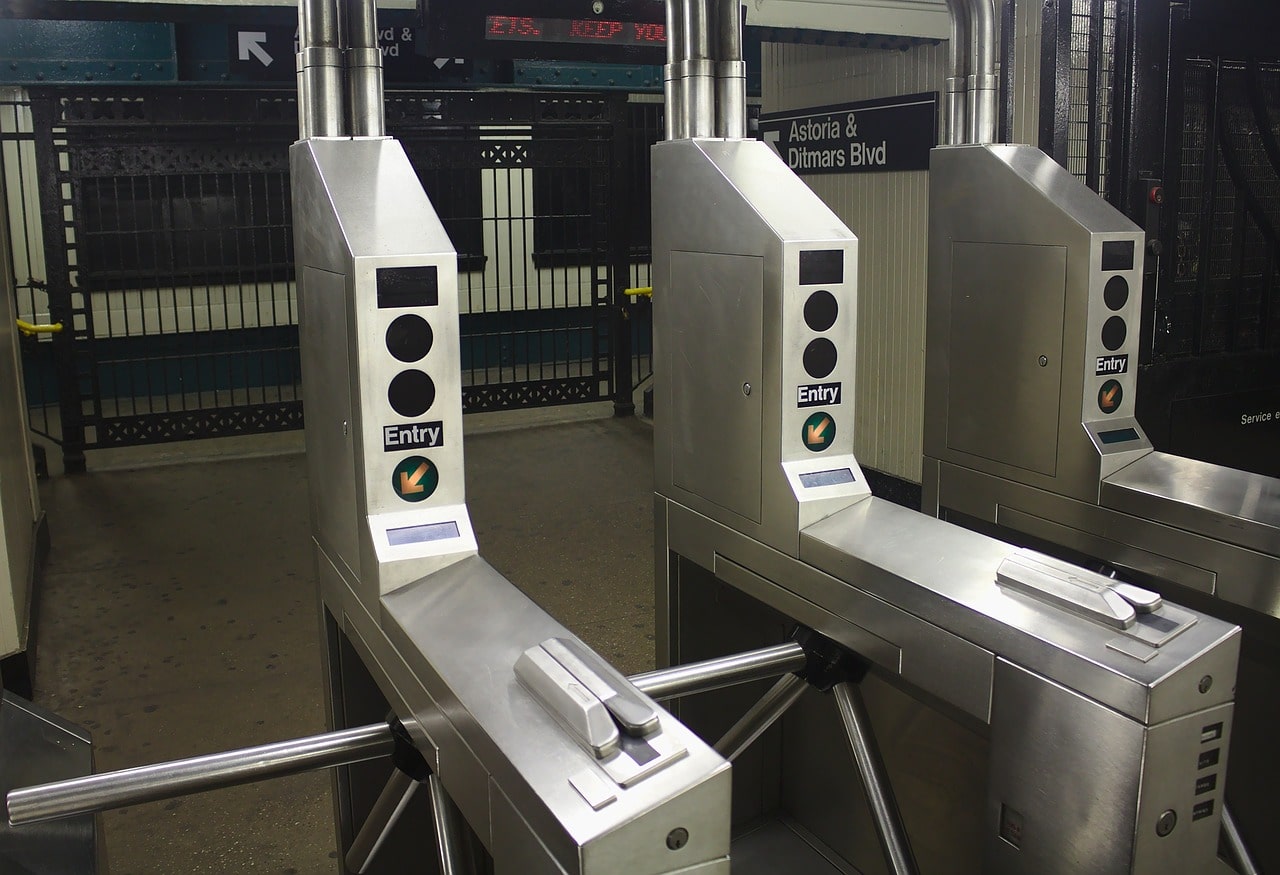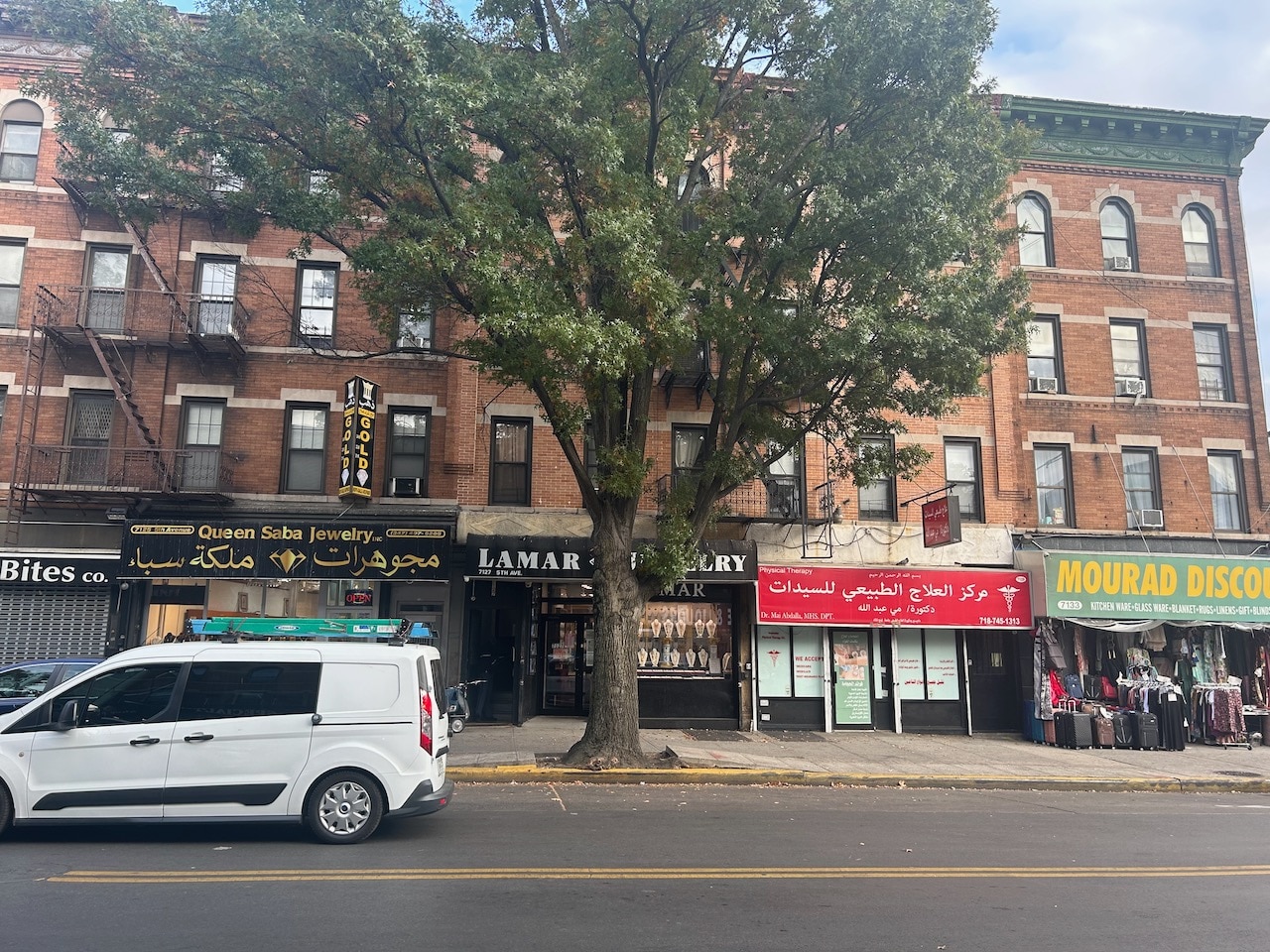The head train heads towards Lefferts Blvd. from Far Rockaway. Photo by MTAlTrain. Creative Commons License, Courtesy Wikimedia.
Once a busy hub for commuters, the Far Rockaway–Mott Ave station now stands largely vacant, with the usual rhythm of daily travel replaced by the constant hum of construction. This shift highlights the profound impact of the MTA’s ongoing rehabilitation project, which has already disrupted the lives of thousands of daily riders.
On January 17, 2025, a significant overhaul of the MTA’s Rockaway Line began, triggering major service disruptions that have affected over 9,000 daily commuters according to the MTA website. Riders now contend with overcrowded trains, longer travel times, and limited shuttle bus options struggling to meet rising demand. While the project aims to reinforce the line’s infrastructure and improve resilience against extreme weather, the immediate consequences for Far Rockaway commuters are hard to ignore. Slated for completion in May 2025 according to the MTA timeline, the project has sparked concerns about its timing, communication, and the effectiveness of alternatives during the disruption.
For many residents, the Rockaway Line is more than just a route—it’s a vital lifeline connecting residents of a remote section of NYC to jobs, schools, and essential services. While the long-term benefits of the rehabilitation are evident, the short-term impact is undeniable. Overcrowded trains and delays have become part of the daily commute, leaving many to question if the project could have been better planned or executed. Shuttle buses, intended to alleviate pressure, have proven insufficient, with riders often facing long waits or overcrowded vehicles, forcing many to find alternative routes.
The rehabilitation project doesn’t fundamentally alter the line’s infrastructure but addresses long-term needs after decades of aging components, some of which are 65 years old. Previous repairs focused on short-term fixes: in 2013, the washed-out right of way was restored; in 2019, flood mitigation work was done at the Hammels Wye Campus; and in 2020, flood hardening was added to protect station equipment. But these measures were temporary. The current project is the first major overhaul aimed at addressing long-term infrastructure needs.
Far Rockaway residents who use the Mott Ave station frequently report significantly altered travel routines, with many commuting three to eight times a week. Jaynalee Navarro, 21, commutes to Hunter College from Far Rockaway. Finding that the shuttle buses were inconsistent and inconvenient compared to the A train, she has turned to transportation alternatives. With increased traffic and delays, she now faces substantial time adjustments.
“I’ve had to drive to Howard Beach Station or take the bus when my car isn’t available. What used to be a quick walk now turns into a 30-minute delay,” Navarro says. “A lot of people have to rearrange their schedules, waking up earlier to catch buses or make transfers.”
Navarro also expresses frustration with the MTA’s communication regarding the disruptions. “I first heard about it in November, but the MTA didn’t post signs until January, right before the shutdown. That didn’t give us enough time to adjust,” she says.
The MTA declined a response for comment. “Unfortunately, due to the high volume of inquiries we receive, we are unable to accommodate inquiries from student journalists, student publications or class assignments” said MTA media liaison Kayla Shults.
Another commuter, Rofiat Olasunkanmi, a 24-year-old graduate student at NYU and small business owner, describes how the changes have turned her commute into a two-hour ordeal, impacting her social life and networking opportunities. She notes that shuttle buses are often more crowded, and increased traffic near JFK airport further lengthens commute times.
“The shuttle buses are slower because they wait until they’re full, which is great for more people to get on, but it makes everything take longer,” Olasunkanmi says. “It’s also affecting local businesses. My clients whom I tend to braid, especially those who don’t drive, have to take the LIRR and then an Uber just to get to me. It’s becoming an expensive and frustrating journey.”
Olasunkanmi’s predicament reflects a broader challenge for local businesses in Far Rockaway. Many entrepreneurs and service providers are finding it increasingly difficult to meet the needs of their clients due to the disruptions. Her own personal braiding business has seen a downturn in clientele, with customers now facing longer and more expensive journeys just to reach her shop. “It’s a ripple effect,” she adds. “Not only are my clients struggling, but it’s also making it harder for me to maintain my business schedule.” These changes are hitting hard in a community already grappling with the challenges of urban life and rising costs.
Other riders echo these concerns, including Emily Keller, who has taken to staying at her boyfriend’s house to make her commute more manageable. She highlights the overcrowding at Howard Beach station, where people rush to catch the shuttle bus.
“The stop at Howard Beach is much more crowded now,” Keller says. “I’ve started using other stops like Rockaway Blvd Station to avoid the congestion.”
Her boyfriend, Carlo Crivio, explains how their living arrangements have changed due to the disruption. “At first, she stayed late because of the commute, and I couldn’t let her go home late at night, so she started staying with me,” Crivio says. “Now, it’s part of our routine. It’s not always easy with so many people and two dogs, but we make it work.”
The impact of these disruptions extends beyond just commuters—families and households are also feeling the strain. For couples like Keller and Crivio, it has led to new living arrangements and altered routines, further complicating daily life. These changes, although necessary for some, have added layers of complexity and stress for those already managing busy schedules and responsibilities.
For others, the overcrowding on the A train has become an issue beyond just Far Rockaway residents. Anisah Afiz, a commuter who doesn’t live in the area but frequently takes the A train, describes how the situation has worsened since the shuttle bus changes.
“The trains are way more crowded now, and it’s obvious the shuttle disruptions have forced more people onto the train. It makes the ride uncomfortable and slower,” Afiz says. “What used to be a manageable commute is now a daily struggle for space.”
The increased strain on the train system highlights how poorly timed the station maintenance has been. As more people are funneled into the limited train service, the already stretched capacity has reached a breaking point. Commuters like Afiz now face uncomfortable, delayed rides into the city, with no clear end in sight.
“It feels like one big inconvenience,” Afiz says. “People are standing in aisles, and it’s difficult to find anywhere to hold onto. It’s frustrating that the MTA hasn’t done more to mitigate the problem.”
For many commuters, the MTA’s lack of sufficient preparation has led to a ripple effect throughout the transit system. As overcrowded trains become the new normal, the entire experience of commuting has shifted from a relatively smooth process to a daily ordeal of discomfort and uncertainty. With the disruption having no clear end in sight, many commuters are left feeling abandoned by the system they rely on.
The overcrowded trains and unreliable shuttle bus service have forced riders to rearrange their schedules, turn to alternative transportation, and endure longer commutes. Many question whether the timing of the station maintenance could have been better planned to minimize these disruptions.
“This could have been handled better,” Afiz adds. “The long-term benefits matter, but the impact on our daily lives shouldn’t be ignored. The MTA should have done more to prepare us for these issues. It’s been a constant inconvenience.”
Many commuters are also raising questions about whether alternative solutions could have been put in place before the project’s start, especially to mitigate the current strain. With some commuters reporting that they have resorted to driving, relying on carpooling, or using rideshare apps, the financial burden has also increased. One commuter, John Davis, notes, “I’ve been forced to pay for an Uber just to avoid the delays, and that’s taking a toll on my wallet.”
Looking ahead, commuters remain hopeful the MTA will address these issues before the project concludes in May. With mounting frustration, the pressure is on the MTA to implement more effective short-term solutions to restore commuter confidence. While many see the long-term improvements as essential, they are also increasingly skeptical about the ability of the MTA to execute this plan without causing further discomfort.
As the rehabilitation work continues, Far Rockaway residents remain uncertain about when, or if, their commutes will return to normal. The question on many minds: Is it worth enduring these hardships for months on end?
The MTA is at a critical juncture. The long-term improvements are necessary, but the immediate discomfort is undeniable. Whether the MTA can resolve these issues and provide a better experience before the project ends remains to be seen. For now, commuters can only hope that the promise of better infrastructure in the future will justify the sacrifices they’re making now.
As this major project unfolds, the ongoing frustrations of Far Rockaway’s commuters paint a stark picture of what it means to endure a transportation overhaul. Despite the promise of future improvements, the current reality is one of daily challenges, discomfort, and uncertainty. Whether the MTA can regain the trust of its riders before the project’s completion will remain to be seen, but for now, the residents of Far Rockaway continue to navigate a difficult journey, hoping that the promise of a stronger, more resilient Rockaway Line will eventually be worth the long wait and ongoing struggles.
Tags: A-Train restoration Anisah Afiz Far Rockway train Jaynalee Navarro Joseph A. Nunez Mott Avenue Station MTA reconstruction Far Rockaway






